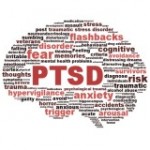The Gift of Fear
In high school, my dad gave me a book called The Gift of Fear by Gavin de Becker (you can create a free account on the NYTimes website and read the first chapter here). I was, and still am, obsessed with FBI profiling manuscripts, cop dramas and serial killers. In hindsight, I realize that it was my way of coping with a neighbor who’s behavior was quickly escalating from peeking in our windows at night, to breaking in when we weren’t home, and knocking on the door when I was home alone (we think he probably had some sort of surveillance to know when my parents left). The book saved my life.
In The Gift of Fear, the author explains how we are genetically designed for survival. Our fight or flight instincts kick in even if we do not see or consciously recognize a danger. Have you ever gotten that weird feeling that something just isn’t right? Listen to it. The author explains that our subconscious puts together clues that we see, hear or feel, even if our conscious mind doesn’t recognize them because we are writing to do lists in our mind, talking on the phone, or in general not paying attention. When watching horror movies we make fun of the main character for walking into obvious danger, but we live in a perpetually preoccupied state and might not pick up on obvious clues either. However, according to the book, our subconscious does and this fear is a gift. So, when you get that icky feeling when walking into an empty parking garage, go get the building security guard to escort you. This is one of many simple steps you can take to NOT make yourself an easy target.
More than once, I knew the prowler was out there. Even before I heard his heavy boots crunch on our gravel driveway, or his pounding fist on the backdoor. More than once, I followed this gut feeling and called 911 and had a deputy out there before he could break-in or drive me out of the house. Every time the deputy found some sort of proof that he had been there. I understood that this fear was a gift and I couldn’t ignore it.
Gift Turned Burden
In most people, once the disaster, trauma, or threat is gone, their fight or flight instincts go back to standby mode. However, in individuals who suffer from Post Traumatic Stress Disorder, or PTSD, their fight or flight instinct is altered. They live in a perpetual state of awareness. In my example above, if I suffered from PTSD because of this repeated trauma, I would show symptoms including nightmares, hyper-arousal, avoidance of situations that made me vulnerable or reminded me of the prowler. The gift of fear would tun into a burden as I lived in a permanent state of fear.
New studies show that the brain chemistry of individuals suffering from PTSD actually changes, but before I go into the details, it’s important to look at the symptoms and definition of PTSD.
Diagnosis
Like mystery meats in school cafeterias, most people think they know what PTSD is, but might be wrong. I was surprised to learn that my own associations of this term were incorrect as I researched this article.
The National Center for PTSD defines it as “an anxiety disorder that can occur after you have been through a traumatic event. A traumatic event is something horrible and scary that you see or that happens to you.” The Diagnostic and Statistical Manual of Mental Disorders IV (DSM) lists criterion that a person has to meet in order to be diagnosed. This includes a history of exposure to a traumatic event, intrusive recollections, avoidant/numbing symptoms, and hyper-arousal symptoms. For the full definition/criterion click here. If you or anyone you know suffers from these symptoms please check out the information on the National Center for PTSD website and seek professional help.
A traumatic event can include a number of things, but the National Center for PTSD lists the following three categories: Disaster and terrorism, this includes human-caused events (such as terrorist attacks), and natural disasters (like floods and tsunamis); violence and other trauma, this includes abuse and sexual trauma, and motor vehicle accidents; and military trauma, which is a combination of the previous categories, but occurs in a military environment. Military is probably the most recognized trauma because of the ongoing wars over the last decade.
History
PTSD wasn’t recognized by the medical world until 1980, when it was included in the third edition of the DSM. Of course, the public was well aware of the effects that trauma can have on our veterans and labeled it as “shell shock.” Now that we know that it exists, we can provide veterans and their loved ones tools to cope.
PTSD Brain
What biologically happens to someone suffering from PTSD and why does it only happen to some and not others? New studies reveal that one of the hormones that regulate fight or flight, cortisol, is altered in the brain of someone with PTSD.
As reported previously on Lucine: cortisol is a steroid hormone produced in the cortex of the adrenal gland. It belongs to a class of hormones called glucocorticoids and plays an important role in regulating cardiovascular function, blood pressure, glucose metabolism, sugar maintenance, and inflammatory response. Cortisol is best known as the stress hormone, and is released in response to stress, and is part of the fight or flight system. Under normal conditions the body regulates cortisol levels which is usually high in the morning and low at night. But under stressful conditions more cortisol is secreted.
Furthermore, the Mayo Clinic states that Cortisol also curbs functions that would be nonessential or detrimental in a fight-or-flight situation. It alters immune system responses and suppresses the digestive system, the reproductive system and growth processes. This complex natural alarm system also communicates with regions of your brain that control mood, motivation and fear.
People suffering from chronic stress overproduce cortisol, but, strangely, those suffering from PTSD have lower cortisol levels. New research shows that the differing levels of cortisol in anxiety disorders are caused by a hypersensitive hypothalamus-pituitary-adrenal (HPA). The result is hypocortisolemia, or low cortisol levels, in PTSD patients. Further studies have to be conducted, but imagine what information can do to the diagnosis and treatment of PTSD sufferers.
Treatment
Current treatment includes cognitive therapy, exposure therapy, eye movement desensitization and reprocessing (EMDR), and group counseling, which all focus on talking through and understanding the patient’s reactions to memories of the trauma.
Selective serotonin reuptake inhibitors (SSRIs) are a type of antidepressant medicine also used in treatment. However with the increasing rate of suicide among returning veterans and the listed side effect of suicidal thoughts/behavior on anti-depressants it is more important than ever to truly understand the cause of PTSD in order to properly treat it.
Conclusion
It is not yet known why some individuals will develop PTSD and others won’t, even when faced with the same situation. Because PTSD is a relatively new diagnosis there is much more to learn about the causes and treatments. It is important to understand that if you or someone you love no longer has a gift of fear, but rather is burdened by it, there is help.
Veterans, please read about the benefits available to you here.
In the coming weeks I’ll be looking into PTSD in female veterans, how our hormones might affect PTSD and if there are any differences between PTSD in male and female veterans. If you are a female vet, have experience with PTSD and would like to share your story please contact me at Lprifogle@lucinebiotech.com.










